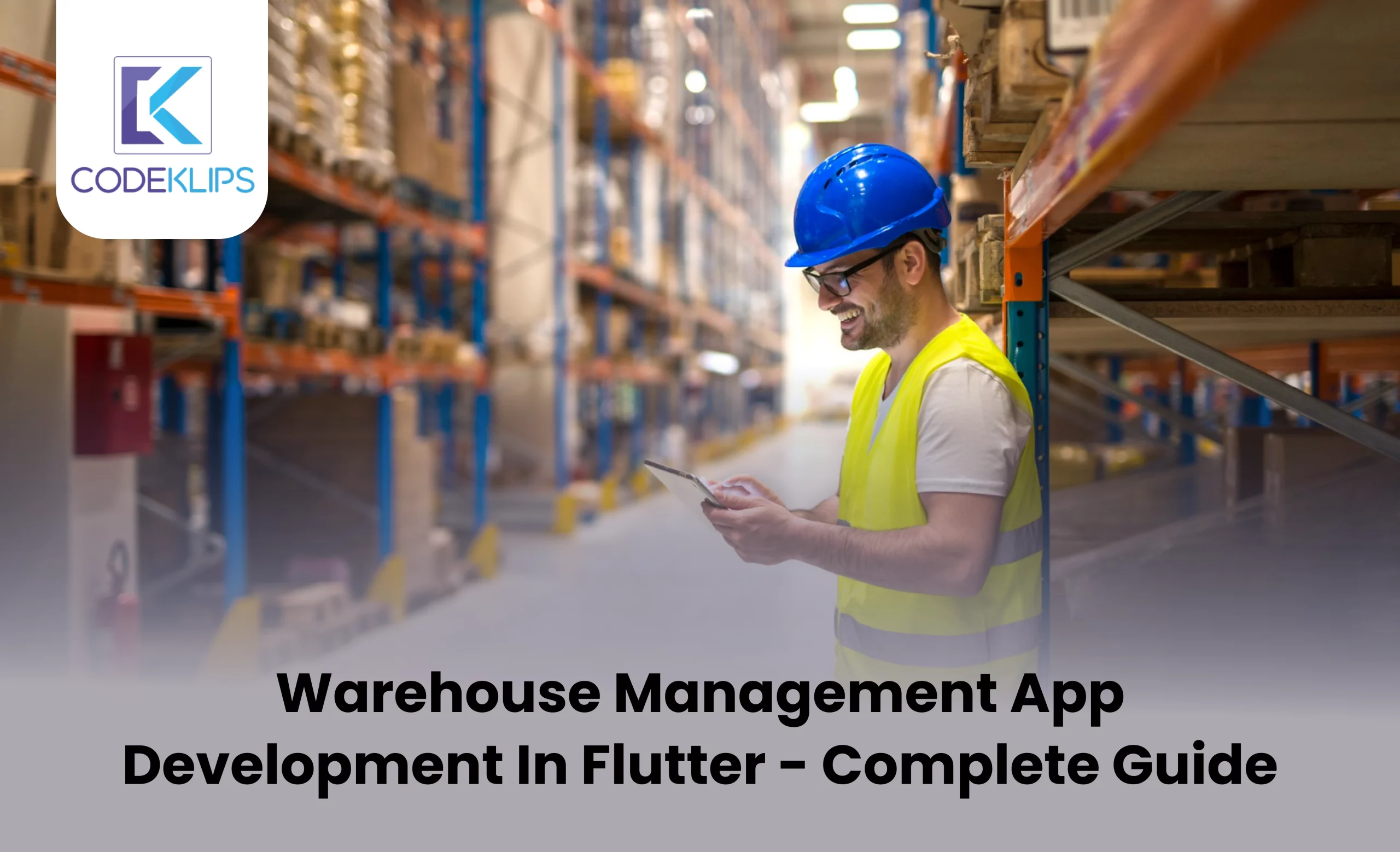Introduction
In today’s fast-moving logistics world, managing a warehouse efficiently is crucial for businesses. A warehouse management app development process helps businesses track inventory, monitor stock levels, and streamline operations. Flutter, a powerful cross-platform framework by Google, offers an excellent solution for Flutter app development in this domain.
If you are a logistics business owner or running a logistics-related startup, this guide will help you understand everything about warehouse management app development using Flutter. We will cover essential features, development steps, benefits, challenges, and expert tips to create a successful app.
What is Warehouse Management?
Warehouse management is the process of organizing, storing, and tracking goods efficiently to reduce costs and improve productivity. A warehouse management system (WMS) automates inventory tracking, order processing, and stock control.
Importance of a Warehouse Management App
- Real-time Inventory Tracking: Avoid stockouts and overstocking.
- Faster Order Fulfillment: Reduce errors in picking and packing.
- Better Space Utilization: Optimize warehouse space.
- Reduced Operational Costs: Minimize labor and material wastage.
- Improved Customer Satisfaction: Deliver accurate and fast orders.
Why Choose Flutter for Warehouse Management App Development?
Flutter is a great choice for Flutter app development because:
- Single Codebase: Develop one app for Android, iOS, and web.
- Fast Development: Hot reload feature speeds up testing.
- Beautiful UI: Create stunning and responsive user interfaces.
- Cost-effective: Saves money by reducing development efforts.
- Google-backed: Reliable and future-proof framework.
According to Statista (2024), 46% of developers prefer Flutter for cross-platform mobile app development, making it the most popular framework.
Another report by SlashData (2023) states that over five million developers use Flutter globally.
Essential Features of a Warehouse Management App
A well-designed warehouse management app must include:
1. Inventory Management
- Track stock levels in real time.
- Automated restocking alerts.
- Barcode and QR code scanning.
2. Order Management
- Create, edit, and track orders.
- Generate invoices and shipping labels.
- Integrate with e-commerce platforms.
3. User Role Management
- Admin, Manager, and Staff roles.
- Permission-based access.
- Secure login with authentication.
4. Warehouse Space Optimization
- Assign bins and storage locations.
- Reduce picking and packing time.
- AI-based space utilization suggestions.
5. Real-time Analytics & Reports
- Generate sales, stock, and order reports.
- Graphs and charts for better insights.
- Export reports in Excel or PDF.
6. Push Notifications & Alerts
- Low stock alerts.
- New order notifications.
- Delivery updates.
7. Multi-Warehouse Management
- Manage multiple warehouses from one app.
- Transfer stock between warehouses.
- Centralized inventory monitoring.
8. Integration with Third-Party Services
- Accounting software (QuickBooks, Xero).
- Shipping carriers (DHL, FedEx, UPS).
- E-commerce platforms (Shopify, WooCommerce).
Step-by-Step Process for Warehouse Management App Development
Step 1: Planning & Research
- Identify business goals.
- Study competitors.
- Define key features and target audience.
Step 2: Choosing the Right Flutter App Development Company
Step 3: UI/UX Design
- Simple and easy-to-use interface.
- Color schemes that match the brand.
- Mobile-friendly navigation.
Step 4: Development
- Backend setup (Firebase, Node.js, or Django).
- Frontend coding with Flutter.
- Database setup (MySQL, PostgreSQL, or Firestore).
Step 5: Testing & Quality Assurance
- Check for bugs and performance issues.
- Conduct user testing.
- Ensure security measures.
Step 6: Deployment & Launch
- Publish on Play Store and App Store.
- Set up a marketing strategy.
- Provide training and documentation.
Step 7: Post-Launch Support & Maintenance
- Regular updates and bug fixes.
- Feature improvements based on feedback.
- 24/7 technical support.
Challenges in Warehouse Management App Development
Real-time Inventory Updates
- Solution: Use Firebase for instant sync.
Data Security
- Solution: Implement encryption and secure authentication.
High Development Cost
- Solution: Opt for Flutter to reduce costs with a single codebase.
Third-Party Integration Issues
- Solution: Use well-documented APIs.
Tips for a Successful Warehouse Management App
- Keep UI simple and easy to use.
- Use cloud storage for better scalability.
- Ensure fast barcode scanning for inventory tracking.
- Allow offline mode for warehouse staff.
- Integrate AI for predictive analytics and demand forecasting.
Future Trends in Warehouse Management App Development
- AI-powered warehouse automation
- Voice-controlled inventory management
- Blockchain for secure transactions
- IoT-enabled smart warehouses
- Drones for automated order fulfilment
Conclusion
Warehouse management app development is essential for logistics businesses to stay competitive. With Flutter, companies can build fast, efficient, and cost-effective warehouse management solutions. By following this guide, logistics business owners and startups can successfully develop and deploy a Flutter-powered warehouse management app that improves efficiency and productivity.
Are you ready to build your warehouse management app? Partner with a Flutter app development company to bring your idea to life and transform your logistics business!
Build Your Warehouse Management App with CodeKlips!
Looking for a fast, reliable, and cost-effective warehouse management app? CodeKlips is here to help! Our expert Flutter app development company builds powerful, easy-to-use apps to streamline your warehouse operations. Let’s turn your idea into reality. Contact us today!
FAQS
What is a warehouse management app?
A warehouse management app is a tool that helps businesses track and manage inventory, orders, and warehouse space efficiently.
Why should I use Flutter for warehouse management app development?
Flutter allows you to build a high-performance app for multiple platforms with a single codebase, reducing cost and development time.
How much does it cost to develop a warehouse management app?
The cost depends on features, complexity, and the development company. A basic app can start at $10,000, while advanced apps may cost $50,000 or more.
Can I integrate my warehouse app with e-commerce platforms?
Yes, you can integrate it with platforms like Shopify, WooCommerce, and Amazon for seamless order processing.
What are the key features to include in a warehouse management app?
Real-time inventory tracking, order management, barcode scanning, user role management, and analytics are essential features.
